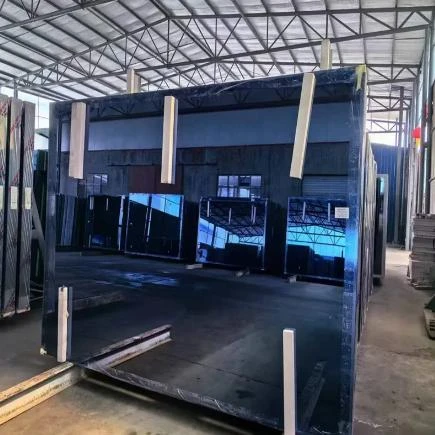Dec . 03, 2024 16:38 Back to list
low e coated glass
Understanding Low-E Coated Glass Benefits and Applications
Low-emissivity (Low-E) coated glass is at the forefront of innovation in the construction and design industries. This specialized glass has gained immense popularity for its ability to enhance energy efficiency in buildings while providing superior comfort, aesthetic appeal, and environmental benefits. In this article, we will delve into the characteristics, advantages, applications, and considerations of Low-E coated glass.
What is Low-E Coated Glass?
Low-E coated glass is a type of insulating glass that has a thin, transparent coating applied to its surface. This coating is typically made from various metal oxides and is designed to reflect infrared radiation while allowing visible light to pass through. The key feature of Low-E glass is its ability to minimize the amount of heat that escapes from a building, effectively acting as a barrier to thermal energy loss.
There are two main types of Low-E coatings hard coat and soft coat. Hard coat, or pyrolytic coatings, are applied during the glass manufacturing process and are more durable, making them suitable for applications that require strength. Soft coat, or sputtered coatings, are applied after the glass is manufactured and offer better thermal performance. Soft coat Low-E glass is typically used in energy-efficient windows.
Benefits of Low-E Coated Glass
1. Energy Efficiency One of the primary advantages of Low-E glass is its energy efficiency. By reflecting heat back into the building during winter and keeping it out during summer, Low-E glass can significantly reduce heating and cooling costs. This translates to lower energy bills for homeowners and commercial property owners alike.
2. UV Protection Low-E glass is effective in blocking harmful ultraviolet (UV) rays, which are known to cause fading in furniture, artwork, and flooring. By using Low-E glass, occupants can maintain the integrity of their interiors and protect their investments from sun damage.
3. Comfort People prefer comfortable living and working environments, and Low-E glass helps to achieve this by reducing drafts and cold spots near windows. By maintaining a consistent indoor temperature, Low-E glass contributes to overall comfort in a space.
4. Noise Reduction Many Low-E coatings are designed to enhance the acoustic performance of windows. This is especially beneficial in urban environments where noise pollution can impact the quality of life. Low-E glass helps to create quieter living and working spaces.
5. Sustainability The use of Low-E coated glass aligns with sustainable building practices. By improving energy efficiency, Low-E glass contributes to reducing the carbon footprint of buildings. Additionally, many manufacturers of Low-E glass adhere to eco-friendly production practices, further supporting sustainability.
low e coated glass

Applications of Low-E Coated Glass
Low-E glass is versatile and can be used in various applications, including
1. Residential Windows Homeowners benefit from Low-E glass in their windows, improving energy efficiency and comfort. Modern architecture increasingly incorporates Low-E glass for its aesthetic qualities as well.
2. Commercial Buildings Large-scale applications of Low-E glass are common in office buildings and commercial spaces, where energy savings can significantly impact operational costs.
3. Skylights Low-E glass is an excellent choice for skylights, allowing natural light into a space while controlling heat gain and loss.
4. Curtain Walls In modern architecture, curtain walls often feature Low-E coated glass, providing a sleek, contemporary look while enhancing building performance.
Considerations
When choosing Low-E coated glass, it is essential to consider several factors, including local climate, building orientation, and specific energy efficiency goals. Different types and coatings of Low-E glass are available, each tailored for particular environmental conditions.
Conclusion
In summary, Low-E coated glass presents a multitude of benefits that make it an invaluable option for energy-efficient building designs. From residential homes to commercial structures, its ability to provide insulation, UV protection, noise reduction, and sustainability makes it a key player in modern architecture. As the demand for greener building materials continues to rise, Low-E glass will undoubtedly remain a focal point in the quest for smarter, more efficient living and working environments.
-
Safety and Style with Premium Laminated Glass Solutions
NewsJun.24,2025
-
Reinvents Security with Premium Wired Glass
NewsJun.24,2025
-
Premium Float Glass Line for Modern Architecture
NewsJun.24,2025
-
Low Emissivity Glass for Energy-Efficient Architecture
NewsJun.24,2025
-
High-Performance Insulated Glass Solutions for Modern Architecture
NewsJun.24,2025
-
Elevates Interior Style with Premium Silver Mirror
NewsJun.24,2025
Related PRODUCTS














